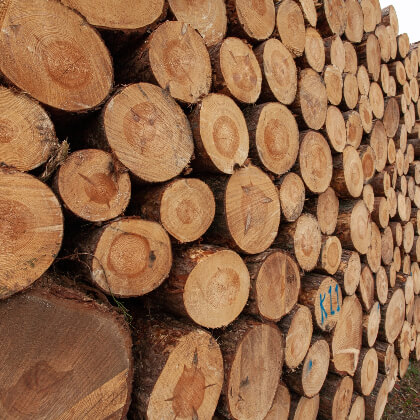
In the timber industry, accurate weight measurement is crucial for a variety of reasons, including transportation logistics, cost estimation, and structural calculations. Timber’s weight isn’t consistent and can vary greatly depending on several factors, making it essential to understand the methods and tools used to calculate it.
Calculating the weight of timber involves more than just placing it on a scale. Factors such as moisture content, density, and the specific species of wood all play significant roles in determining the actual weight. Therefore, specialized equipment and knowledge are necessary to obtain precise measurements.
This article explores the various methods and tools employed to calculate timber weight. We’ll delve into the science behind timber weight variations and discuss the advanced weighing solutions that facilitate accurate measurements in the industry.
Factors Affecting Timber Weight
Several factors contribute to the variability in timber weight, making accurate measurement a complex task. One of the primary factors is the moisture content within the wood. Freshly cut timber, or green wood, contains a high percentage of water, significantly increasing its weight compared to dry wood. As the wood dries, it loses moisture and weight, which can affect calculations if not accounted for.
Another factor is the specific gravity or density of the wood species. Different types of wood have varying densities; for example, hardwoods like oak are denser and heavier than softwoods like pine. This intrinsic property must be considered when calculating weight, as it directly impacts the overall mass of the timber.
Additionally, the timber’s size and dimensional measurements are essential. Irregular shapes and sizes require precise measurement techniques to calculate volume accurately. Factors such as knots, defects, and bark can also affect weight and need to be considered in detailed calculations.
Methods for Calculating Timber Weight
To calculate the weight of timber accurately, professionals use a combination of mathematical formulas, reference tables, and modern measuring devices. The fundamental formula involves calculating the volume of the timber and multiplying it by the density of the wood species:
Weight = Volume × Density
Calculating the volume depends on the shape of the timber. For rectangular logs, the volume is found by multiplying length by width by height. For cylindrical logs, the formula involves the area of the circular cross-section multiplied by the length.
Reference tables are widely used to provide average densities for various wood species at specific moisture contents. These tables are essential for quickly obtaining the necessary density values without conducting laboratory tests.
In addition to formulas and tables, moisture meters are crucial tools. They measure the wood’s moisture content, allowing for adjustments in weight calculations. Since moisture can significantly alter weight, using a moisture meter ensures that this variable is accurately accounted for in the final calculation.
Advanced Weighing Solutions in the Timber Industry
The timber industry has embraced advanced weighing solutions to enhance accuracy and efficiency. One such solution is the use of industrial-grade scales designed to handle large and heavy loads. These scales are robust and can accommodate the substantial weight of timber logs and bundles.
Weighbridges are integral in timber operations. They are large scales capable of weighing entire vehicles loaded with timber. By weighing the vehicle both empty and loaded, operators can calculate the net weight of the timber. Weighbridges are equipped with advanced sensors and software to provide precise measurements quickly.
Onboard weighing systems have revolutionized timber transportation. Installed directly on logging trucks or forklifts, these systems measure the weight of the timber as it’s loaded. They provide real-time data, helping operators ensure that load limits are not exceeded, which is vital for safety and compliance with transportation regulations.
Moreover, digital load cells and weighing indicators offer high precision and are used extensively in sawmills and processing facilities. These devices can be integrated into conveyor systems and other machinery, allowing continuous monitoring of timber weight during processing stages.
The Role of Technology in Enhancing Accuracy
Technology plays a pivotal role in improving the accuracy of timber weight calculations. Modern software integrates data from various measuring devices, including moisture meters and scales, to provide comprehensive weight analyses. These systems can adjust for factors like moisture content and density variations automatically.
Satellite and GPS technology are also used in conjunction with onboard weighing systems to track timber loads during transportation. This integration ensures that the entire supply chain maintains accurate records of timber weights, enhancing transparency and efficiency.
Artificial intelligence and machine learning algorithms are beginning to make their way into the industry, predicting weight based on a multitude of variables and historical data. These advanced systems can provide highly accurate estimates, reducing the reliance on manual calculations and minimizing errors.
Conclusion
Calculating the weight of timber is a complex process influenced by several variables, including moisture content, wood density, and timber dimensions. By utilizing advanced weighing systems and embracing technological innovations, the timber industry can achieve accurate measurements essential for operational efficiency and safety.
If you’re looking for state-of-the-art weighing solutions to enhance your timber operations, Sasco Africa offers a wide range of scales and systems tailored to meet the industry’s demands. Visit our website to explore how our products can provide the precision and reliability you need.


